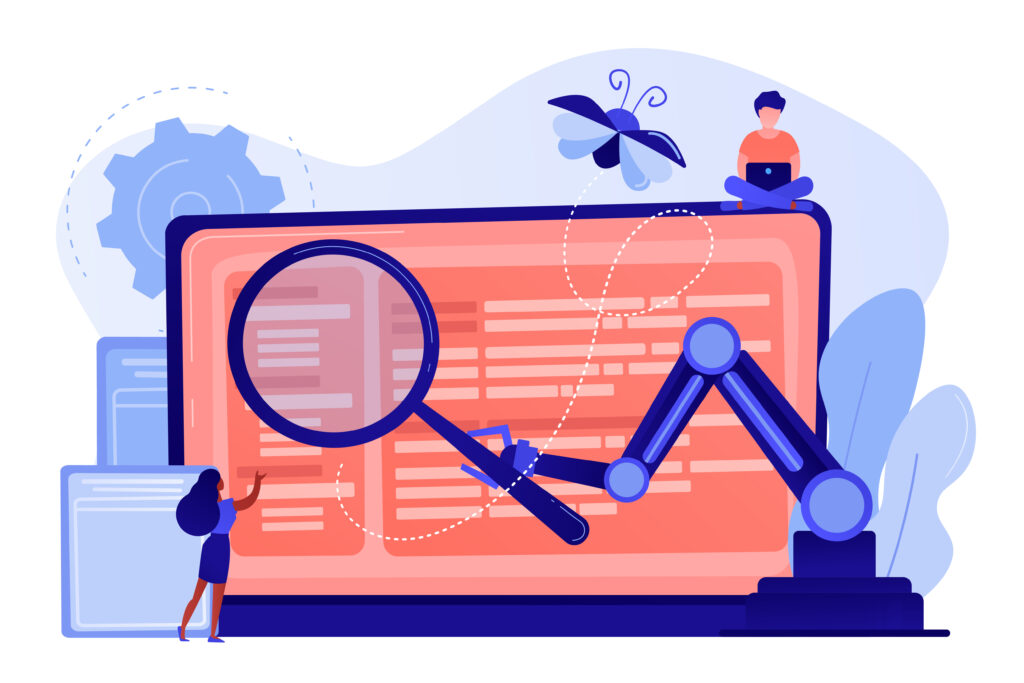Table Of Content
In today’s digital age, applications that harness the power of information retrieval and natural language processing (NLP) stand at the forefront of innovation, offering unparalleled user experiences. The advent of transformer-based models marks a paradigm shift, significantly enhancing how applications understand and process user queries.
This document explores concepts for integrating semantic search and LLMs into applications, emphasizing the significant role of transformers that go beyond traditional keyword-based search mechanisms for a deeper, more refined comprehension of context, user intents, and document content.
Semantic Search: Beyond Keywords
Traditional search engines, constrained by exact term matches, often need to capture the essence of user queries, leading to suboptimal search results. Through their self-supervised pre-training and ability to capture intricate contextual variations, transformer-based models offer a robust solution to the “vocabulary mismatch” problem.
By understanding the semantic similarities between diverse expressions, semantic search significantly broadens the scope of relevant results, accommodating complex queries with enhanced precision and utility, thereby elevating the overall user experience.
Integrating Search Components: A Structured Approach
The following components work together in a layered or hybrid mechanism, where each step progressively refines the search results, leading to a highly effective and efficient search process that leverages the strengths of each approach.
1. Traditional Keyword Search: Initially, applications deploy keyword search to identify texts or documents sharing keywords with the query. Despite its simplicity, this method’s precision and relevance are limited. Its reliance on exact term matches limits its ability to understand the semantic nuances of queries and documents.
2. Dense Retrieval: As the first phase in the semantic search journey, dense retrieval utilizes embeddings to transform documents and queries into numerical representations in a high dimensional vector space, facilitating a vector-based search approach. This shift from exact term matching to semantic understanding allows for identifying closely related search results across languages, synonyms, paraphrasing, and other linguistic variations, laying the groundwork for a more intuitive and effective search experience.
Some common techniques and algorithms used for dense retrieval include:
- Dual-Encoder Models: These models use separate encoders to generate embeddings for queries and documents independently. The encoders are trained to bring the embeddings of relevant query-document pairs closer together in the vector space. Examples include SBERT (Sentence-BERT), DPR (Dense Passage Retrieval), and ColBERT.
- Cross-Encoder Models: Unlike dual-encoders, cross-encoders generate embeddings for the entire query-document pair together, allowing for better modeling of interactions between the two. However, they are computationally more expensive during inference. Examples include MS MARCO and the Poly-Encoder.
- Approximate Nearest Neighbor Search: To efficiently search for relevant documents in the high-dimensional embedding space, approximate nearest neighbor (ANN) search algorithms are employed. Popular libraries like FAISS, Annoy, and ScaNN are used for this purpose.
3. Reranking: Building upon dense retrieval, reranking employs sophisticated models to refine search results based on relevance, utilizing the semantic processing power of LLMs. Re-ranking relevance scores to document-query pairs ensures the final search results are relevant and tailored to the user’s query.
Some common techniques and algorithms used for reranking include:
- Cross-Attention Rerankers: These models use cross-attention mechanisms to score the relevance of a document given a query. They input the query and document text and generate a relevance score. Examples include MonoBERT and ColBERT.
- Sequence-to-Sequence Rerankers: These models treat the reranking task as a sequence-to-sequence problem, where the input is the query and a list of candidate documents, and the output is a ranked list of documents. Examples include SETRANK (Search Engine Text Ranking) and PARADE (Passage Reranking with Adapters).
- Unsupervised Rerankers: These models leverage the powerful language understanding capabilities of large pre-trained language models like BERT or GPT-3 to score documents’ relevance without any supervised training on relevance data. Examples include Poly-Encoder and Poly-Ranker.
Generating Answers
The integration of semantic search with Large Language Models (LLMs) culminates in the generation of concise, accurate answers. Technically, this process entails building a text archive, generating embeddings, creating a semantic search index, defining search functions, and utilizing vector search libraries.
Developing semantic search capabilities involves using specialized tools, managing pipelines (LLMOps), debugging models, and creating test sets to evaluate behavior.
Incorporating a search component to enrich prompts with contextual understanding enables applications to deliver answers in a natural, conversational manner akin to human-like responses. This feature enhances user engagement and fosters a deeper connection with the application, advancing human-computer interaction.
Through prompt engineering, queries can be crafted to leverage semantic understanding better, thereby improving search results quality. By carefully designing prompts, developers can fully exploit the potential of LLMs, ensuring that applications grasp the semantic content of queries and documents more deeply and align more closely with user intent.
Evaluation of Search Systems
By meticulously testing and refining the search functionalities, applications can achieve a delicate balance between precision and efficiency, setting new standards for excellence in search capabilities. To ensure the effectiveness of these advanced search systems, developers use rigorous evaluation metrics such as Mean Average Precision (MAP), Mean Reciprocal Rank (MRR), and Normalized Discounted Cumulative Gain (NDCG).
Use Cases
Each use case demonstrates semantic search capabilities’ broad applicability and transformative potential in applications. By understanding and leveraging the semantic content of queries and documents, developers can build applications that not only meet but exceed user expectations, paving the way for a new era of intelligent, context-aware search experiences.
1. Enhancing Information Retrieval:
The fundamental use case of semantic search is to improve the precision and relevance of information retrieval. Applications can deliver more accurate and contextually relevant search results by moving beyond traditional keyword searches to understanding the semantic nuances of queries and documents. This is particularly valuable in domains where user queries can be highly nuanced and the content vast and varied, such as academic research databases, multilingual application use cases, transcripts of videos, legal document repositories, and healthcare information systems.
2. Personalized Content Discovery:
Semantic search capabilities enable applications to offer personalized content discovery by understanding each user’s unique intents and interests. Whether recommending articles, products, or services, semantic search can analyze past user interactions and content semantics to tailor recommendations that are more likely to resonate with the user’s specific needs and preferences.
3. Question Answering and Virtual Assistants:
Integrating semantic search with LLMs allows for the development of sophisticated question-answering systems and virtual assistants to understand complex queries and generate concise, accurate answers. This use case is crucial for customer support applications, educational tools, and any platform seeking to provide immediate, authoritative responses to user inquiries.
4. Conversational Interfaces:
Semantic search is key to creating more natural and effective conversational interfaces. By enriching prompts with contextual understanding, applications can facilitate interactions that mimic human conversation, enhancing user engagement and providing a more intuitive user experience. This capability is essential for chatbots, interactive voice response (IVR) systems, and other conversational AI applications.
5. Content Analysis and Summarization:
Applications can leverage semantic search to perform advanced content analysis and summarization, automatically extracting key themes, sentiments, and facts from large volumes of text. This use case is valuable for news aggregation platforms, research tools, and business intelligence applications, where users must quickly grasp extensive content’s essence.
RAG Systems and Semantic Search
Retrieval Augmented Generation, also called RAG systems, incorporates a two-component strategy: a retrieval model that searches a knowledge base (non-parametric memory) for relevant information and a generation model that uses this retrieved information and the query to generate responses.
RAG systems utilize semantic search as a key method for the retrieval phase, enabling the accurate understanding of user intent and significantly improving the delivery of pertinent results. By leveraging pre-trained models (for generation) and dense vector indices of knowledge bases like Wikipedia (for retrieval), RAG systems can dynamically enrich their responses without retraining for new information, addressing some limitations of purely parametric models.
Integrating semantic search into RAG systems enables them to effectively harness context points within knowledge bases, providing a more nuanced gauge of user intent and significantly enhancing the generation of accurate and relevant responses.
Conclusion
The integration of semantic search and LLMs represents a leap forward for generative AI applications seeking to enhance their text-processing functionalities. By embracing the advancements offered by transformers, applications can not only meet but exceed user expectations, paving the way for a new era of intelligent, context-aware search experiences.
Integrating the retrieval and generation components seamlessly requires careful design and optimization.













Luv’d this post! I think it’s on point about traditional keyword search being limiting. I’ve seen firsthand how dense retrieval via LLMs like SBERT & DPR can revolutionize search capabilities, even with semantic search. The future is definitely in vector-based approaches!
Hiya! I’m intrigued by the discussion on semantic search & LLMs but I’d love to hear more about practical implementation in machine learning consulting settings. Can you provide some concrete examples of how these techs are being used in real-world projects? Thanks for sharing your expertise!
I’ll provide some concrete examples of practical implementation in machine learning consulting settings. In AI development services, semantic search is being integrated with LLMs to enhance question-answering systems and virtual assistants. For instance, a company may use semantic search to analyze user interactions and content semantics to recommend articles or products that are more likely to resonate with the user’s specific needs.
Another example is the integration of semantic search into conversational interfaces, such as chatbots and IVR systems, to facilitate interactions that mimic human conversation. These capabilities can be applied in various domains, including customer support, education, and healthcare.
The techniques and algorithms used for dense retrieval, such as word embeddings and transformer-based models, are essential components of these implementations.
I’m glad you found the discussion on semantic search and LLMs interesting. However, I’d like to see some real-world examples of how these technologies are being applied in AI development services projects.
For instance, what kinds of challenges do developers face when implementing semantic search in conversational interfaces or question-answering systems? Are there any specific use cases where integrating semantic search with LLMs has led to significant improvements in user experience?
I’d love to hear more about the practical applications and lessons learned from real-world projects that have successfully integrated these technologies.
It’s helpful to see concrete examples of how semantic search with LLMs is applied in real-world projects. However, the provided excerpt already showcases a few: personalized content discovery, question-answering systems, conversational interfaces, and text generation for enhanced user experience in applications like customer support and educational tools. The integration of these technologies can lead to more effective retrieval and generation capabilities in large language models (LLMs), ultimately enriching user interactions with AI-powered applications.
Semantic search is being applied in various machine learning consulting settings. For instance, our client developed an AI-powered chatbot that utilized transformer-based models to offer personalized content discovery and question-answering capabilities. We integrated semantic search with LLMs to enable the system to understand user intent and provide accurate responses. The outcome was improved engagement and a more effective conversational interface.